Archive for January, 2021
How to Avoid a Dud Second-Hand Car
We’ve previously discussed some of the benefits with inspecting a second hand vehicle. Naturally, this is as good a way as any to make sure that the car you’re buying second hand is fit to keep you going. Beyond that, you might also want to take a close look at the service book, ensuring that the car has been regularly maintained and serviced by the appropriate professionals.
Before you get too confident that might be the end of the matter, there is one more thing you should look into – and it is arguably, the most important thing you should look into.

Personal Properties Securities Register (PPSR)
Fortunately, each state across the country maintains their own written off register, which is nowadays aggregated in the federal government’s Personal Properties Securities Register (PPSR), which is an online search system and noticeboard detailing security interests in personal property
Write-offs
When it comes to write-offs, it’s important to distinguish that there are two types – statutory write-offs, and repairable write-offs. Both categories on the register are restricted to vehicles up to 15 years old. The registration of a written off vehicle is also cancelled once declared a write-off by the relevant authority who supplies the information. Such authorities typically include the likes of insurance companies, dealers, auctioneers, and other parties who trade such vehicles for parts or scrap value.
In the case of a statutory write-off, the vehicle has either been: damaged beyond economic repair; damaged extensively by hail, floods or fire; stripped of parts; or suffering a notable level of structural damage that would inhibit the vehicle being repaired to a safe and operable standard. These vehicles are meant to display a notice advising of their written off status. Meanwhile, it is prohibited to repair the vehicle or take it onto the roads – its use is now limited to scrapping, or for parts.

As far as repairable write-offs, these vehicles are deemed a write-off when their underlying salvage valuation plus costs associated with repairing any damage exceed the market valuation of the vehicle. This has a tendency to work against older vehicles, particularly those from luxury manufacturers, or models which are known to depreciate rapidly.
Unlike a statutory write-off, vehicles which have been declared a repairable write-off may be repaired and returned to the road. This will typically be recorded with the registration body in each state, and may show up on the registration certificate. As you can image, the process of returning a vehicle of this nature onto the road is somewhat strict. As well as the repairs themselves, owners are required to provide relevant documentation proving the identity of the car, while also taking the vehicle through a roadworthy test and government inspection.
Final takeaway
Having the peace of mind and clarification that a vehicle is not a statutory write-off is a blessing for motorists. On the contrary however, the presence of repairable write-offs on the relevant registers means that affected vehicles will take a significant hit in terms of their valuation – despite the fact they have passed all necessary tests and are considered safe and operable. Keep this in mind if you’re considering purchasing a vehicle that was a repairable write-off.
Tesla Reinvents Their Wheel For 2021.
Tesla has revealed updates to their Model S. The big sedan has been given tweaks to the exterior, the drive, train, and the interior. Also, gone is the Performance model and replaced by the Model S Plaid and Model S Plaid+.
Front and centre, well…left on American spec cars, is a major change to the wheel. It’s no longer round or even vaguely ovoid. It’s a yoke, not unlike those found in fighter jets. A broad “U” shape, a pair of spokes join the verticals at hub height and allow a broader view of the digital screen. It’s sure to cause controversy and pub discussion, but that’s not the only change. The large centre console screen has been tipped 90 degrees to a landscape orientation and is set into the dash rather than standing proud. Tesla say it’s more a gamin screen than anything with ten teraflops of processing power.
There’s more carbon fibre or wood trim covering parts of the dashboard and door panels, and the door cards have been redesigned and appear to feature much-needed additional storage space. The stylish new centre console also has more storage space and comes complete with wireless charging for multiple devices. The rear seats look more sculpted and feature a new fold-down armrest with cupholders.
Rear-seat passengers get an 8-inch screen that offers the same infotainment and gaming functions as the main screen, and it even works with wireless gaming controllers. The Model S has three-zone climate control, a 22-speaker audio system, heated seats all around (and ventilated front seats), ambient lighting and a glass roof as standard. White, black and beige remain the only interior color options.

The exterior has been gently massaged. There the same coke bottle flanks, slightly reprofiled slimline front and rear lights, and coupe style profile. The front bumper has been reprofiled, losing the blunt end from top to bottom, and now adds a gentle curve to split the look horizontally, including a cooling airvent, as it wraps around to each wheel arch and extends a bottom lip ever so slightly. The rear valance has also been changed and looks more like a pair of exhausts tips hiding on each side.
Underneath are now three motors. The new Plaid and Plaid+ will offer a scintillating 1.99 seconds (Plaid) to see the 100kph mark, cross the 400 metres in just over nine seconds, and 200mph/320kph in the top speed matter. Current pricing, says Tesla, is US$121,190 Model S Plaid and US$141,190 Model S Plaid+. Expected range is now 520 miles or 837 kilometres.
The Model X will come with only one three motor variant, and should see the tonne in 2.5 seconds. Top speed for the SUV is around 163mph/262kph and a range of around 340 miles or 547 kilometres. Pricing starts from US$121,190, the same price as the Model S Plaid and US$40,000 more than the Long range bi-motor Model S.
New Reasonably-Priced Cars (Commodore/Falcon Replacements)
By now you’ve probably recovered from the loss of not being able to purchase a new Falcon or Commodore in Australia. These were lovely, big, spacious cars that could travel long distances in superb comfort. So what other alternatives are there for the buyer looking for a new car with those ‘good-ol’ Commodore and Falcon traits? Well, the good news is there are some potential new vehicles for you.
I’ve had a look at some of the roomier cars with decent performance, decent comfort and reasonable pricing; and when I mean reasonable pricing I mean anywhere up to $60k. There are one-or-two vehicles on the list that are priced beyond the $60k mark, but I’ve added them because I reckon that they would still be worth considering for those of you who have a few more dollars in your back pocket. None on the list run out to much beyond $80k.
The pricing given for each vehicle should be regarded as the estimated standard model price, so if you go for the higher-end models or want more options, then you would expect that these variants will be pricier. Don’t forget to get in touch with our sales team at Private Fleet because often we can get you some great deals!

Alfa Romeo Giulia ($60,900)
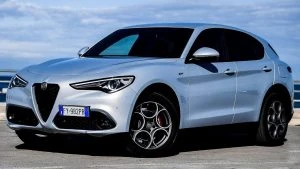
Alfa Romeo Stelvio ($65,900)
Alfa Romeo might just have a car that fixes your Commodore or Falcon withdrawal symptoms. The Giulia is a really nice drive, is quick and gets five-star safety. The Stelvio is the SUV version that’s superbly nice-looking and great to drive. These two Alfas tick all the right boxes for those who are after a great driving experience and something a bit special.

Audi A5 ($71,900)

Audi A6 ($84,900)

Audi Q5 ($66,900)
Three Audis come to mind – all of which are impeccably built, comfortable and high-tech.

BMW 3 Series ($70,900)

BMW 4 Series Coupe ($71,900)
These two Beemers are worth a look. Any of the line-up are dynamic and efficient cars to drive. They’ve just been updated with all the latest new technology. The sexiest car in this list might be the 2021 4-Series Coupe.

Chrysler 300 ($59,950)
Do try one of these! Superbly comfortable and roomy, the 2021 Chrysler 300 is loaded with luxury and style. There is heaps of smooth engine torque and plenty of performance available with the 300. A Chrysler 300 comes with the choice of a V6 or V8 petrol engine, and the pricing is outstanding, too.
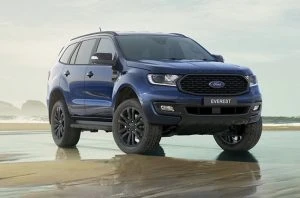
Ford Everest ($50,090)

Ford Mustang ($51,590)

Ford Ranger ($29,190)
Three Fords might do it for you. The Mustang has loads of performance available, but it is a bit tight on rear seat space. The Ranger is a comfortable ute that doubles as a workhorse. The Everest is an SUV Ranger, and is lovely to drive long distance with the family and gear on-board. The Ranger and Everest boast five-star safety, 4×4 capability and come with all the latest technology.
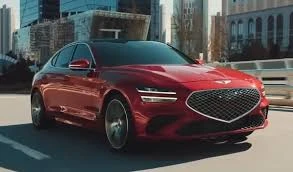
Genesis G70 ($59,300)

Genesis G80 ($68,900)
Here are two very underrated cars, or perhaps just not so well known. The G70 and G80 are smooth, luxury cars built by Hyundai, and come with gobs of style, refinement and high-tech features. They are also superb at covering long distances quickly. Nice lookers, too!

Haval H9 ($40,990)
Thought I’d throw the new Haval H9 into the mix. It’s a stylish, spacious, big SUV that’s loaded, safe and comfortable to drive. Check out the price!

Honda Accord ($51,990)
Honda might be able to tempt you into the fold with their new Accord. There are few spacious FWD sedans that can do everything as nicely as an Accord. Comfort, new technology, new features and reliability go hand-in-hand at Honda.
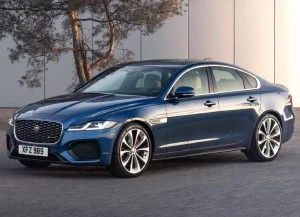
Jaguar XE ($65,670)
It might be a bit small for some, but the Jaguar XE is a pleasant drive.

Jeep Grand Cherokee ($59,950)
Ride high in a well-priced Jeep that can head off-road, is big on space and can cosset you in luxury.
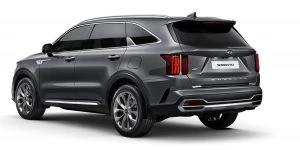
Kia Sorento ($45,850)

Kia Stinger ($49,550)
Kia has these two models that are as different from each other as chalk and cheese. However, they are roomy, good performers and are packed with up-to-date features as standard. The pricing is excellent, and the Stinger goes like a stabbed rat!

Land Rover Discovery Sport ($65,700)
This new Landie might be the right option for you. 4×4 capability, loaded with kit and stylish.

Lexus ES 300h ($62,525)
Lexus GS 300 ($74,838)
Lexus IS 300 ($61,500)
Lexus IS 300h ($64,500)
Lexus IS 350 ($66,500)
Lexus NX 300 ($57,500)
Lexus NX 300h ($60,500)

Lexus RC 300 ($67,990)
Lexus RC 350 ($70,736)
I can count nine Lexus vehicles which might be the right fit for you. Each variant is different, so there is a high chance that one of these will meet your requirements. Lexus vehicles are high-end Toyotas with excellent reliability, performance, luxury and style. Five-star safety comes with each of these machines, while the RC is a quick performer. Hybrid versions are extremely efficient. The NX is an SUV-type vehicle.
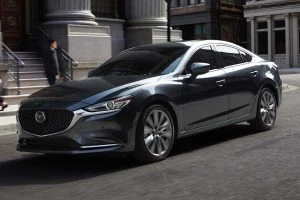
Mazda 6 ($34,490)
Mazda BT-50 ($36,550)
Mazda CX-8 ($39,910)

Mazda CX-9 ($45,990)
Aussie people seem to like Mazdas, and one of these four versions might appeal to you. Mazda vehicles are well-priced, safe, comfortable and reliable performers. The CX-9 is very roomy, and the 6 comes with sedan and wagon variants.
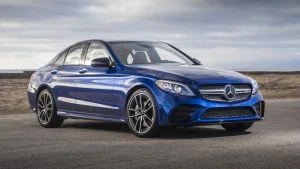
Mercedes-Benz C-Class ($66,300)
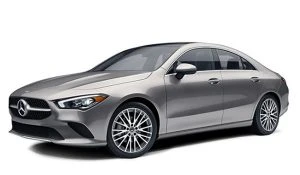
Mercedes-Benz CLA ($62,600)
Owning a new Merc doesn’t come cheap, so I’ve added just the C-Class and CLA as an alternative. These 2 classy cars are excellent to drive, comfortable and safe. They might be a bit small, however.
Mitsubishi Pajero ($54,490)

Mitsubishi Pajero Sport ($46,990)
Don’t forget the Pajero! The latest version is very good at touring long distances, great for towing, spacious and a 4×4 king. All the latest technology is on-board one of these. Again, the pricing is first-rate.

Nissan Pathfinder ($44,240)
Check out the classy new Nissan Pathfinder. It has plenty of space for the family, has five-star safety and it rides nicely on and off the road.

Peugeot 508 ($57,490)
Peugeot 5008 ($51,990)
Two classy Peugeot variants are well worth a look. The new 508 and 5008 are very stylish and safe, and they are possibly some of the nicest cars to look at on this short list (that’s quite long). Seating is spacious and comfortable, and the technology and features are all up-to-the-minute. They cover the ground effortlessly and efficiently, and they are priced very well for what they offer.
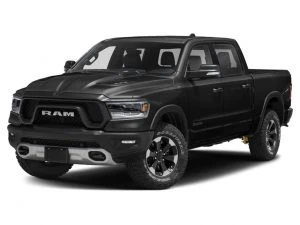
RAM 1500 ($79,950)
I thought I’d add the highly rated RAM 1500. “NZ Four Wheel Drive” magazine has classed this as the best ute for 2021. 4×4 action is a breeze in one of these tough yet comfortable machines, and space is abundant inside the cabin and out on the deck.
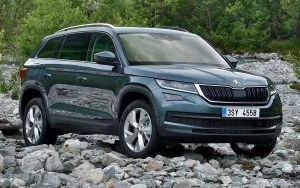
Skoda Kodiaq ($46,390)
The Kodiaq is one of the most practical vehicles you can buy. Off-road ability, space and comfort are all part of the Kodiaq’s repertoire. It also boasts one of the biggest boots.
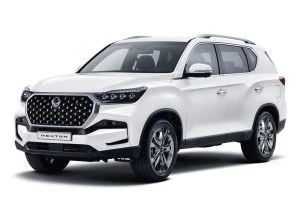
Ssangyong Rexton ($39,990)
Ssangyong’s are tough, reliable and practical. The Rexton is the latest SUV 4×4 variant that has all the latest new technology, comfort and space you’ll need. Pricing is excellent and the styling looks pretty good, especially with big alloys and fat rubber.

Subaru Levorg ($37,240)
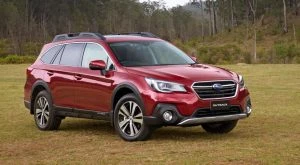
Subaru Outback 3.6R.
Subaru Outback ($37,440)
How about the Levorg or Outback wagons? Safety, AWD, reliability and practicality are all found inside one of these. There are also some quick versions of these, as well.
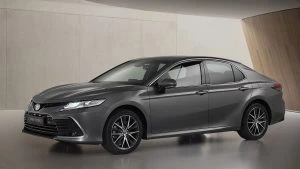
Toyota Camry ($28,990)
This is one of the cheapest cars on the list that starts out at under $30k. A new Camry is very modern, practical, efficient, safe and reliable. What more could you want?
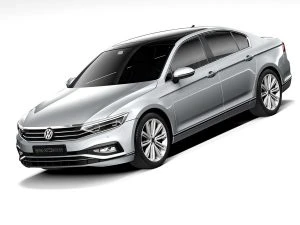
Volkswagen Passat ($46,590)
VW has the Passat. Essentially it’s the European version of the Toyota Camry. These are nice to drive, a bit more luxurious and great on style. Here is a good practical car.

Volvo S60 ($55,990)
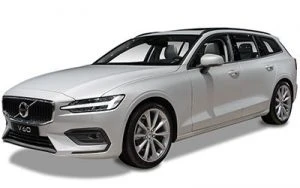
Volvo V60 ($57,990)

Volvo XC60 ($64,990)
Three Volvos slot into the price bracket range that I’ve been looking for – each a bit different from the other – but all built on Volvo’s latest 60 platform. They are very modern, very stylish, very comfortable and very safe. The Volvo XC60 has AWD and some handy off-road ability, while the V60 is a classy wagon. The S60 is the sedan version. Performance models come with hybrid technology, and all are great long-distance tourers.
2021 Toyota Yaris ZR Hybrid: Private Fleet Car Review.
Toyota is arguably the world’s leader when it comes to lobbing a hybridised drive-train into cars, and their small car, Yaris, has finally been given the treatment as seen in Camry, Corolla, and luxo-brand Lexus. The Yaris comes in three flavours, being Ascent Sport, SX, and ZR, and in non-hybrid form starts at around $25,500 drive-away. That’s for the Ascent Sport in manual and plain white paint…. Go partly electric and there’s a need to head to the SX. There’s a price difference of $2,100 between the standard and hybrid, with the battery version seeing $32,545 on the sticker. ZR starts from $33,655 for the petrol, and the hybrid $35,715 in white. Our review car came with a red-orange colour known as Coral which takes it to $36,230. It’s worth noting that Toyota hiked the Yaris prices substantially in 2020, with the Ascent Sport copping an increase of $9,500…
The Yaris comes in three flavours, being Ascent Sport, SX, and ZR, and in non-hybrid form starts at around $25,500 drive-away. That’s for the Ascent Sport in manual and plain white paint…. Go partly electric and there’s a need to head to the SX. There’s a price difference of $2,100 between the standard and hybrid, with the battery version seeing $32,545 on the sticker. ZR starts from $33,655 for the petrol, and the hybrid $35,715 in white. Our review car came with a red-orange colour known as Coral which takes it to $36,230. It’s worth noting that Toyota hiked the Yaris prices substantially in 2020, with the Ascent Sport copping an increase of $9,500… The engine is a three cylinder petrol jobbie, but unusual in that its a big’un. It’s a 1.5L unit, larger than the more common 1.0L to 1.2L powerplants found elsewhere. On its own it would be a more than respectable engine for Toyota’s smallest automobile. Fuel tank size is 36L, down from 40L, and 91RON is just fine. Economy is quoted as 3.3L/100km (combined cycle) for the Hybrid compared to 4.9L/100km from the standard 1.5L. Our 70/30 cycle saw 5.2L/100km from the 1,130kg (dry) ZR Yaris. Cargo is 270L minimum.
The engine is a three cylinder petrol jobbie, but unusual in that its a big’un. It’s a 1.5L unit, larger than the more common 1.0L to 1.2L powerplants found elsewhere. On its own it would be a more than respectable engine for Toyota’s smallest automobile. Fuel tank size is 36L, down from 40L, and 91RON is just fine. Economy is quoted as 3.3L/100km (combined cycle) for the Hybrid compared to 4.9L/100km from the standard 1.5L. Our 70/30 cycle saw 5.2L/100km from the 1,130kg (dry) ZR Yaris. Cargo is 270L minimum. As such, partnered with a battery system, the whole shebang delivers a total of 85 kW and 141 Nm to the front wheels via a CVT auto. The standard engine brings 88kW and 145Nm. Drive in the ZR is selected via a simple and straightforward in-line lever, complete with a B for Braking at the end of the selection line. This allows a driver to harness more of the kinetic energy that braking lets loose and channels it to the battery.
As such, partnered with a battery system, the whole shebang delivers a total of 85 kW and 141 Nm to the front wheels via a CVT auto. The standard engine brings 88kW and 145Nm. Drive in the ZR is selected via a simple and straightforward in-line lever, complete with a B for Braking at the end of the selection line. This allows a driver to harness more of the kinetic energy that braking lets loose and channels it to the battery. ZR is ignited via a push-button, and there’s that eerie silence that hybrids and electric cars have, before a gentle accelerator push has the Yaris ZR Hybrid waft away quietly before the petrol engine kicks in. Toyota has configured this to play its part from either around 25kph on a gentle getaway, or, like all hybrids, straight away if the sensors read a heavy right foot. The 1.5L is noticeable but not intrusively so, and those that have drive three cylinder engined cars will appreciate that familiar off-kilter thrum upfront.
ZR is ignited via a push-button, and there’s that eerie silence that hybrids and electric cars have, before a gentle accelerator push has the Yaris ZR Hybrid waft away quietly before the petrol engine kicks in. Toyota has configured this to play its part from either around 25kph on a gentle getaway, or, like all hybrids, straight away if the sensors read a heavy right foot. The 1.5L is noticeable but not intrusively so, and those that have drive three cylinder engined cars will appreciate that familiar off-kilter thrum upfront. There’s good initial speed, and the Yaris ZR Hybrid delights in both urban and freeway driving. Its quick, too, in rolling acceleration, with a definitive and solid urge to hustle as an when required. It hangs on nicely, with a finely tuned suspension dialling out all but the worst of the more common irregularities found in roads. A benign handling set-up sees minor understeer at suburban velocities, with long sweeping turns easily controlled by steering input or gentle braking.
There’s good initial speed, and the Yaris ZR Hybrid delights in both urban and freeway driving. Its quick, too, in rolling acceleration, with a definitive and solid urge to hustle as an when required. It hangs on nicely, with a finely tuned suspension dialling out all but the worst of the more common irregularities found in roads. A benign handling set-up sees minor understeer at suburban velocities, with long sweeping turns easily controlled by steering input or gentle braking. It’s well specified inside, with a HUD or Head Up Display taking pride of place. Toyota’s familiar and wonderfully user friendly touchscreen with voice recognition, Mobile Assistant, Siri Eyes Free, Miracast and myToyota mans the upper centre of the dash, and a mix of grey shades add a touch of funkiness to the seats. However, it’s still a kind of budget car in a way, as the driver’s seat is fully manual in adjustment, and the cloth trim means no heating or venting. They are, however, bolstered for extra support.
It’s well specified inside, with a HUD or Head Up Display taking pride of place. Toyota’s familiar and wonderfully user friendly touchscreen with voice recognition, Mobile Assistant, Siri Eyes Free, Miracast and myToyota mans the upper centre of the dash, and a mix of grey shades add a touch of funkiness to the seats. However, it’s still a kind of budget car in a way, as the driver’s seat is fully manual in adjustment, and the cloth trim means no heating or venting. They are, however, bolstered for extra support. The driver’s dash display is a little unusual in look, with the centre recessed in and having only an info screen. The power/charge screen and speed are housed in two separate dials on the binnacle and well forward of the info screen. They’re digital in layout and look, and have a stylised font that’s eyecatching. They need to be as otherwise the dash is remarkably bland and dull. A single thin strand of red breaks up the solid black plastics, and that’s it. The airvent surrounds are a piano black, and contrast with the varying sages of grey on the seats and linings of the roof and doors.
The driver’s dash display is a little unusual in look, with the centre recessed in and having only an info screen. The power/charge screen and speed are housed in two separate dials on the binnacle and well forward of the info screen. They’re digital in layout and look, and have a stylised font that’s eyecatching. They need to be as otherwise the dash is remarkably bland and dull. A single thin strand of red breaks up the solid black plastics, and that’s it. The airvent surrounds are a piano black, and contrast with the varying sages of grey on the seats and linings of the roof and doors. Outside it’s a different story, with that Coral colour highlighting the Yaris’ pear shape from roofline to wheelarches as seen from front or rear. The tail tucks in around the prominent lights, with a subtle pair of lines that joins them and the rear door handles. LED headlights show the way at night.
Outside it’s a different story, with that Coral colour highlighting the Yaris’ pear shape from roofline to wheelarches as seen from front or rear. The tail tucks in around the prominent lights, with a subtle pair of lines that joins them and the rear door handles. LED headlights show the way at night.
Simple black and machined alloys underpin the Yaris ZR Hybrid, with the 18 inch wheels wrapped in Bridgestone Ecopia rubber at 185/55. No skimping on safety across the range either. Lane Trace Assist, Road Sign Assist, Lane Departure Alert, eight airbags, and Intersection Turn Assistance are across the board. Blind Spot Monitor and Rear Cross Traffic Alert are ZR bespoke. Servicing and warranty details are online.
No skimping on safety across the range either. Lane Trace Assist, Road Sign Assist, Lane Departure Alert, eight airbags, and Intersection Turn Assistance are across the board. Blind Spot Monitor and Rear Cross Traffic Alert are ZR bespoke. Servicing and warranty details are online.
At The End Of The Drive.
It’s a good drive but the price is an eyebrow raiser. Equipment levels are high to make up for it though, including the Head Up Display and eight airbags. Yaris is also heading Toyota’s push to bring sportiness back to the brand with the Gazoo Racing, GR, powerhouse versions. But, for the money, Kia, Hyundai, Mazda, Ford, VW, offer bigger vehicles and at not a whole lot worse economy.
Check out the 2021 Yaris here.